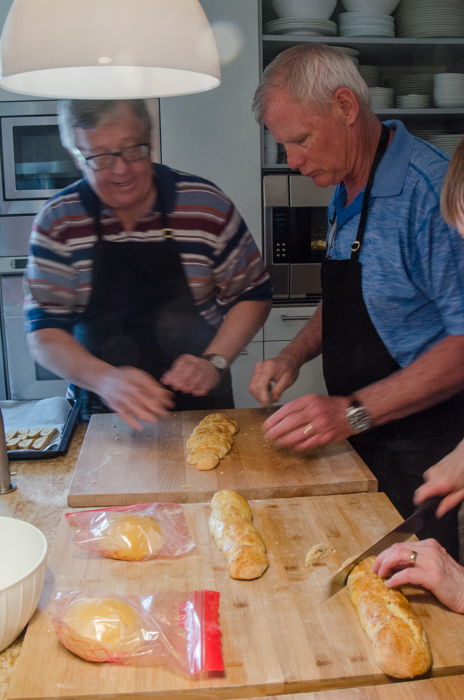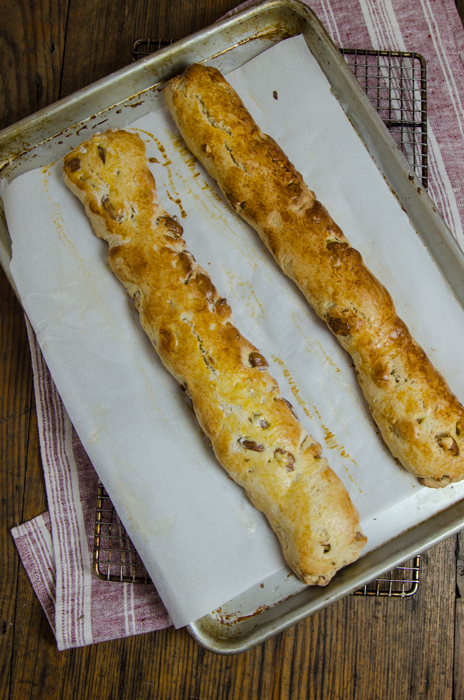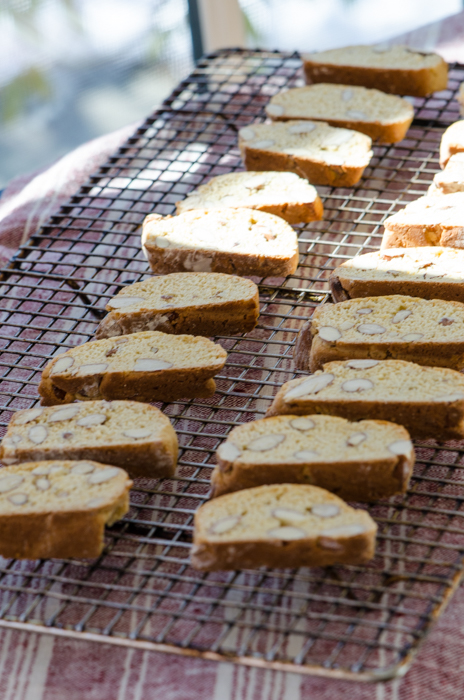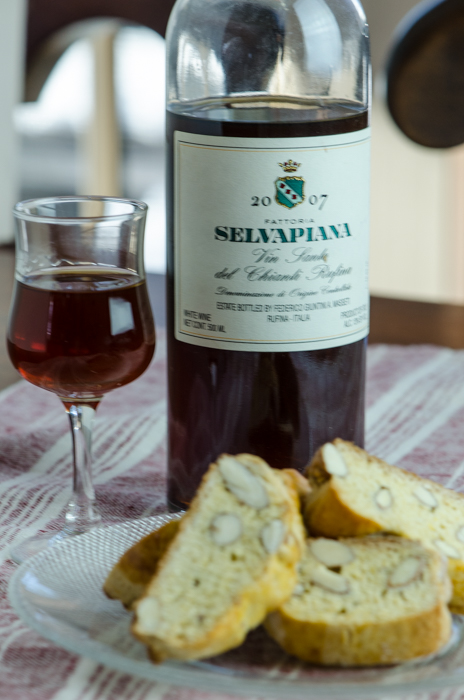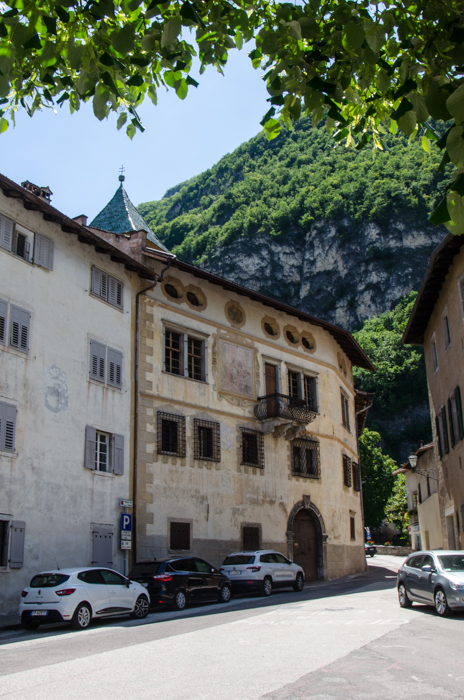
Nestled against the steep rock face of Fennberg mountain lies the small wine village of Margreid. Stately homes of the local nobility as well as quaint old farmhouses line the narrow streets, where today the locals still gather on the few benches in the center as school lets out for the day. The wine business has a long history in this village, where supposedly the oldest vine in Europe, dating from the 17th century, still bears fruit. But behind the ancient facades lies a winery leading the way to bring wine production into the future.
Alois Lageder is on the forefront of developing biodynamic and sustainable practices in all areas of process, from the vineyard to the bottle. Knowing when to empower nature to take its course and when to introduce technology to the mix, Lageder is pursuing an admirable vision centered around ensuring his estate, his terroir, and therefore his wine have a bright and long future in spite of the environmental challenges that we face today.
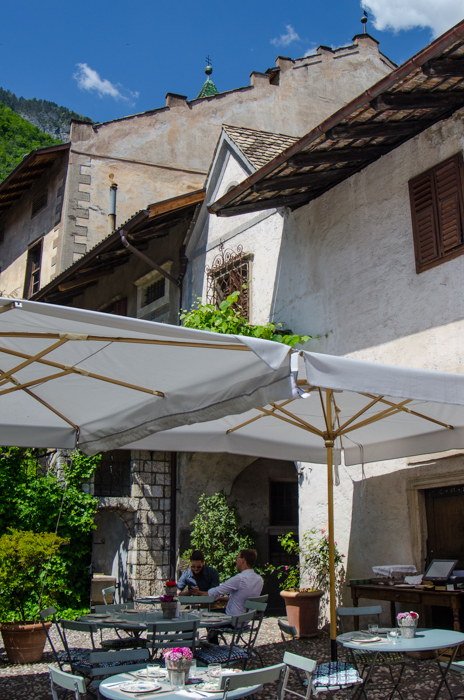
I met my guide Christian at Vineria Paradeis, an enoteca and restaurant on the estate. On a sunny May day, it is the perfect setting to sample a few wines and enjoy a light meal. Christian informs me that the restaurant features organic, seasonal, local products with the goal to become totally biodynamic as soon as there are sufficient local vendors to supply them, probably still a few years off.
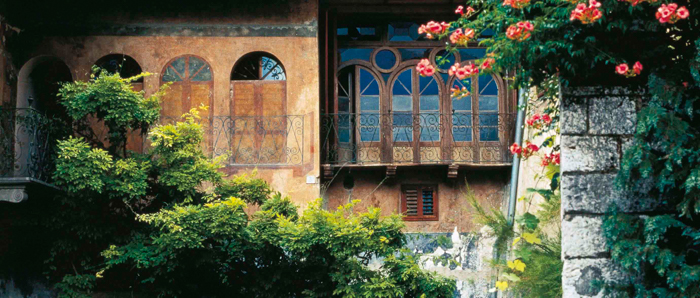
We walk through the lovely courtyard with a large fountain, and through a gate into the yard of Casòn Hirschprunn. Portions of this palazzo date back to the 13th century, it was eventually completed in the 16th century by the Hirschprunn family, a local family with enough wealth to buy their way into the nobility. Eventually their fortunes waned and the property was sold to the church. As with many estates owned by the church, they produced wine to generate income. This lasted until the 1990s, when Mr. Lageder purchased the Casòn. The palazzo and grounds have been left in the original condition, and combined with the restored facilities in the Vineria make an ideal setting for special events.
We walk across the small central square of Margreid, and down a narrow alley to the production facility. As we walk, Christian and I chat about the passion and commitment Lageder has for biodynamic methods. Biodynamics (from the Greek bios meaning life and dinamikòs meaning movement) is a method of agriculture based on the principles developed by the Austrian philosopher Rudolf Steiner at the beginning of the 20th century. Biodynamics views a farm as an enclosed microcosm containing a variety of plants and animals, soil and nature. Their objective as wine growers is not to simply grow grapes, but to maintain and develop this complex ecosystem which will naturally result in grapes of the highest quality, and at the same time ensure the sustainability of their land.
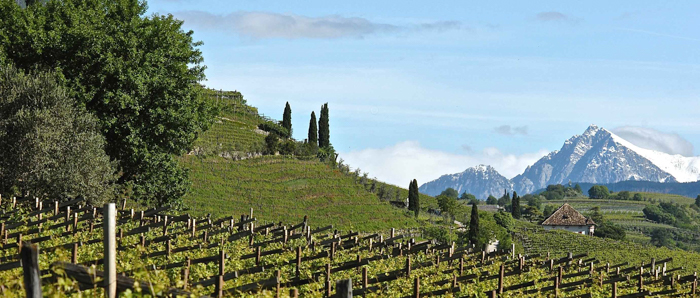
At the practical level this means working without chemicals and synthetic products for plant protection, i.e. no herbicides, insecticides, fungicides and mineral fertilizers, and instead turning to biodynamic preparations and homeopathic infusions. They promote biodiversity by sowing ground cover plants and planting shrubs, introducing animals into the vineyards and fertilizing the soil with compost. To quote from their web site: “The 21st century´s modern man often no longer sees nature’s interrelationships and has lost the working knowledge that our forebears acquired through observation over the millennia.”
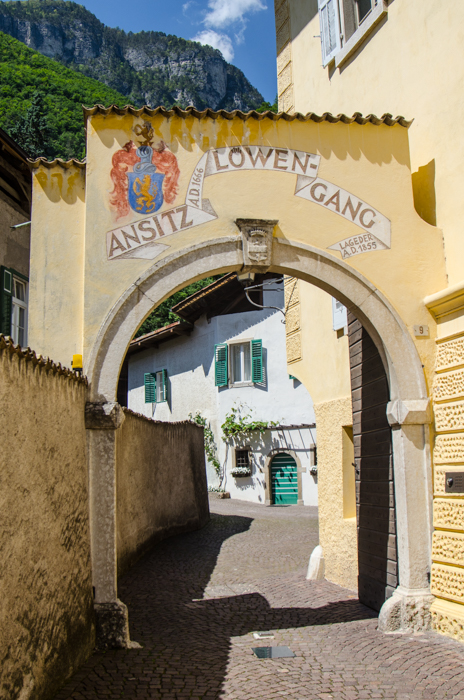
We arrive under the arched entrance to Ansitz Löwengang. A wine cellar since 1666, as the oldest date on the arch indicates, the property was purchased in 1855 by the Lageder family, who had been producing wines in Bolzano. Walking through the archway you are momentarily transported back in time by the sight of corn stalks drying on an open air loft, just as they would have dried them hundreds of years ago to obtain corn meal for the favorite local dish, polenta.
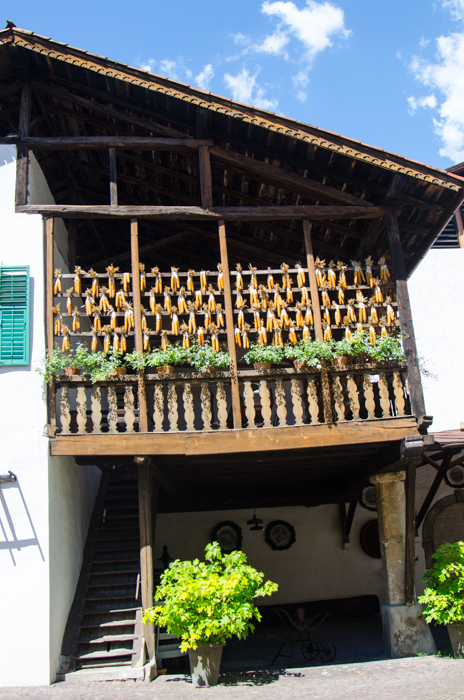
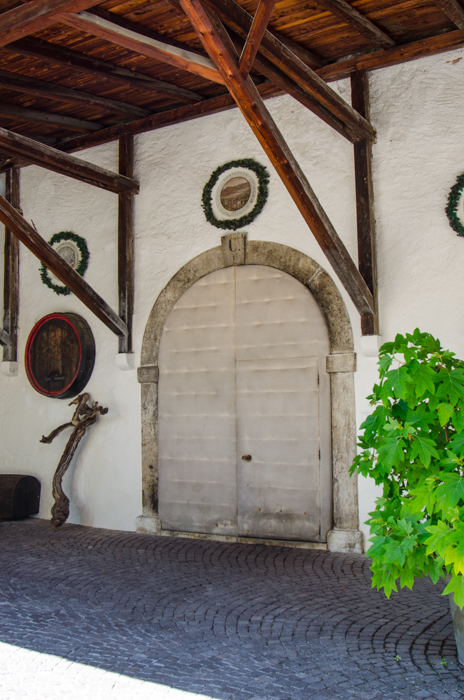
Under the loft is the entrance to the original wine cellar of Ansitz Löwengang. It is flanked by a couple of old presses and other original artifacts. But as we turn to the right, we travel forward in time a couple of centuries to the very modern production facilities used today – topped with solar panels as the winery intends to become self-sufficient with its energy needs in the near future. With 300 days of sunshine, and the fast moving Adige River nearby, the resources are there.
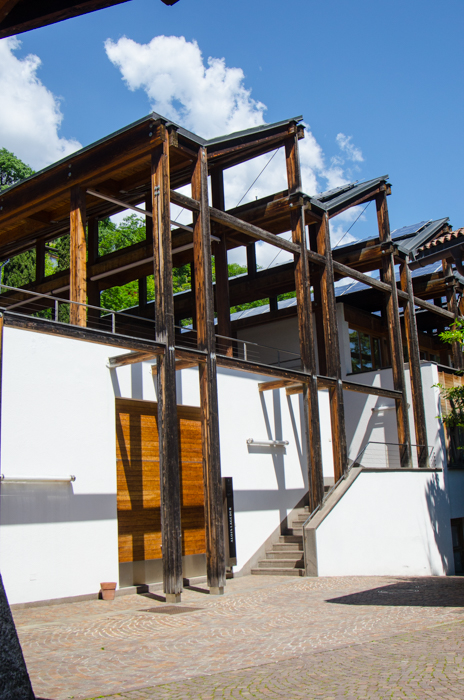
We begin with the new facilities, thoughtfully arranged in a striking modern building built in the mid-1990s. The grapes arrive on the top of the building where they begin their transformation, allowing gravity to assist in the movement of the product from one stage to the next. The building itself, designed by American architects, is supported by a single large central column and as we travel down the several levels the separate production flows for the white and red wines seem to gracefully weave back and forth around this blue center. White and red grapes are processed separately; white grapes are very softly ‘pressed’ to minimize contact with the phenols in the skins to insure the wines are clear and clean on the palate.
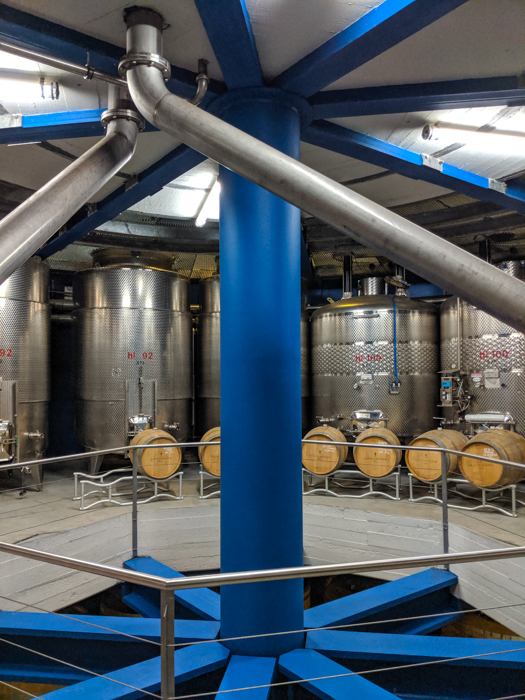
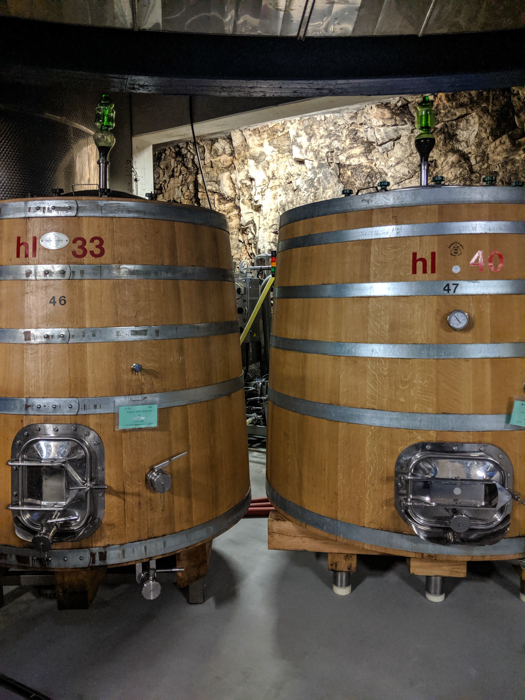
On the bottom floor, behind the aging barrels, you can see where the facility was carved into the mountain, the most natural way of maintaining a consistent temperature and humidity. You can also see the chalky terroir that has made this area a favorite for wine production for hundreds of years.
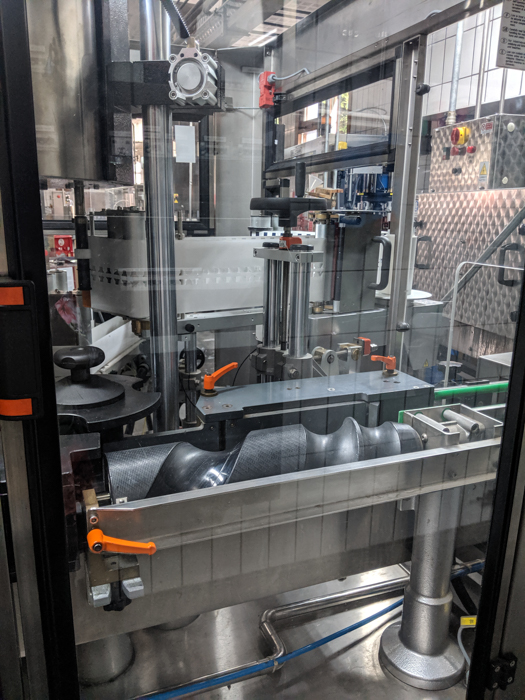
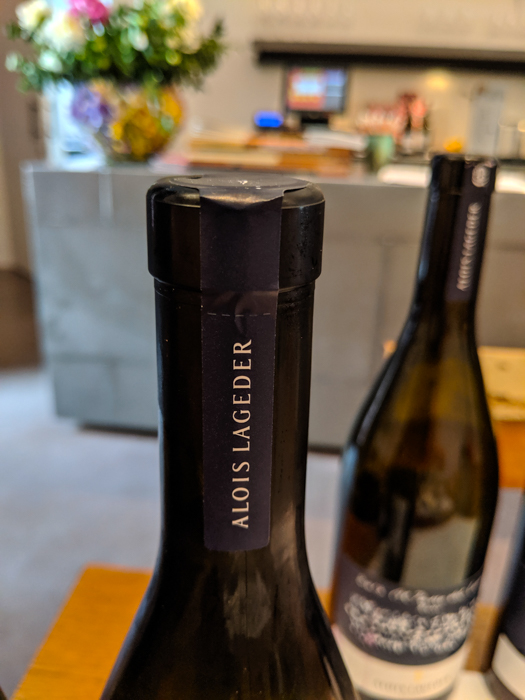
Our next stop is the bottling line, which is typically a quick stop on any winery tour with nothing special to learn – but not here at Lageder. The commitment to sustainability extends here. No longer will Lageder offer screw top caps on any of its wine, all are back to cork. And the cork will not be covered by a foil, which have typically been made of tin, heat-shrink plastic, aluminum or polylaminate aluminum, but by a strip of heavy paper. Christian led me to the new machine, the first of its kind, that was constructed specifically to place this new type of seal on each bottle. It created a few difficulties in the flow to start, but the problems have been addressed and they are in production now.
On to the aging rooms, where Christian shows me how a simple aging room can be transformed into a work of art – one of many artworks hidden along our path through the winery. A small camera was installed in one of the barrels, to capture the yeast activity during fermentation. This activity is projected onto the walls of the room, accompanied by Bach’s 6th Brandenberg Concerto slowed down 60 times. This serves a hidden, second purpose – there are several wine producers in Italy that believe that the vibrations of music have a positive effect on the aging process. No one is quite sure how exactly this works, but it certainly appeals to their Italian esthetic!
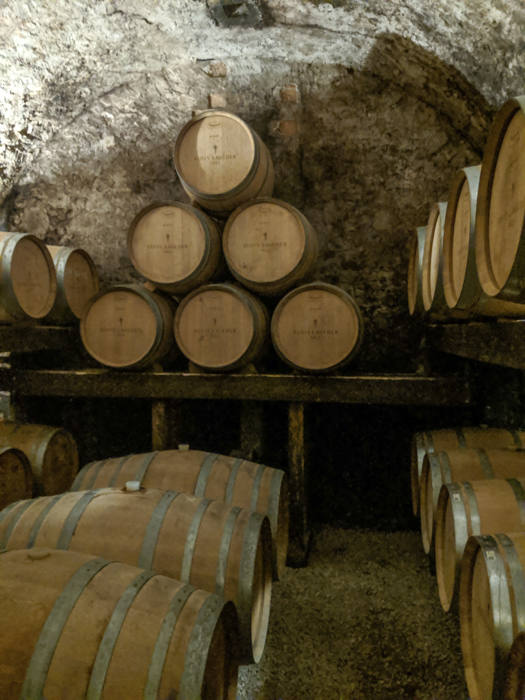
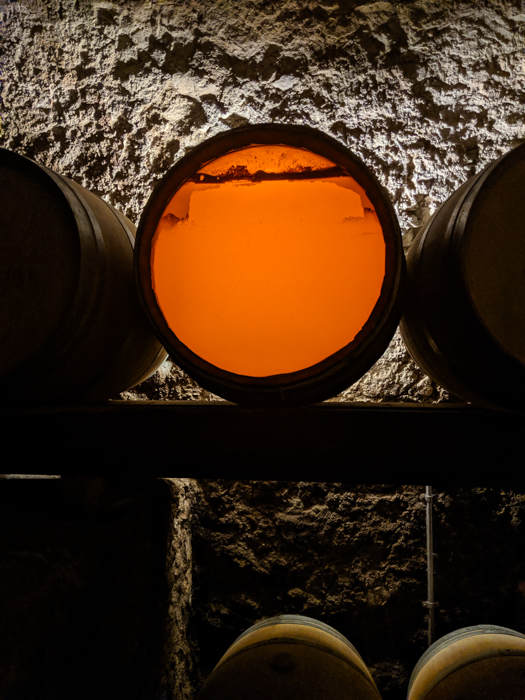
We leave the music behind us and enter the historic cellar of the original Ansitz Löwengang, today used for the aging of their flagship Chardonnay of the same name. Here the wine ferments in the barriques that surround us, and age on the lees for 11 months. Christian points out the single barrique with a transparent side where you can see the activity inside.
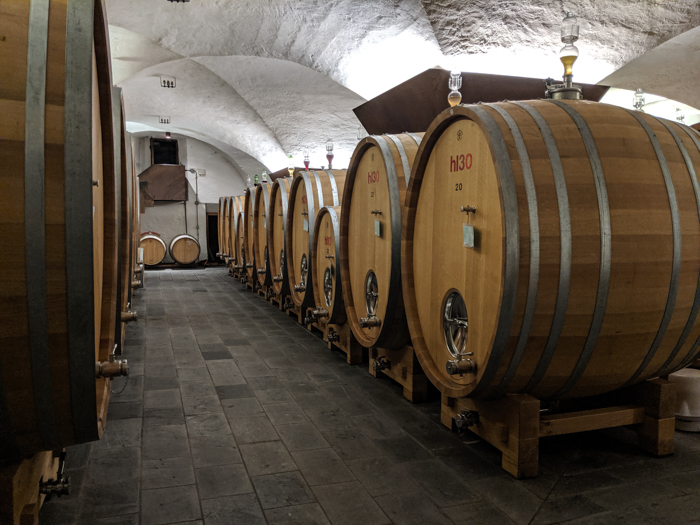
We visit one more aging room, this also in the original cellar behind the ached and padded door. Here are large botti of various sizes and shapes and origins, each bestowing a slightly different flavor to the wine. Some of French origin, many others from a local Sudtirol producer, Mittelberger. Christian pointed out two odd tearshaped barrels that Mittleberger has just developed that Lageder is testing out – the unique shaped causes slightly different movement of the wine during fermentation, and the yeast slowly rolls down the gently sloped sides. The hope is to develop more complexity of flavor by simply changing the geometry of the barrique.
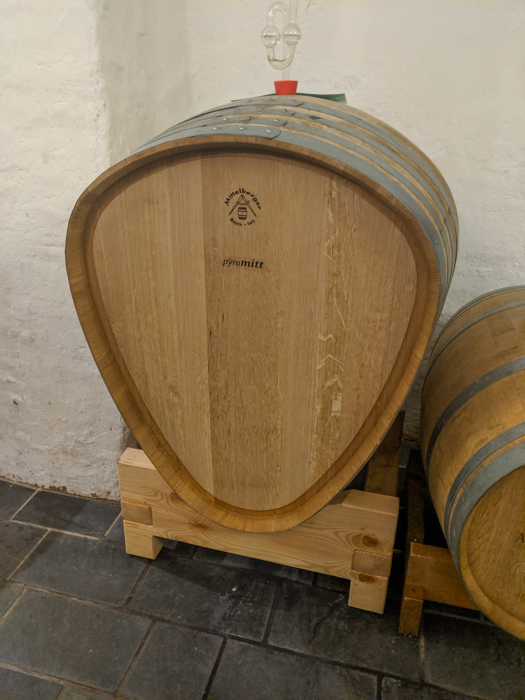
We return to the Vineria where I had the opportunity to sample a nice variety of Lageder’s wonderful wines.
2018 Muller Thurgau
A cross between Riesling and Madeleine Royale, this grape finds ideal conditions in the cool climate of Valle Isarco, between Chiusa and Bressanone, and at elevations over 2,300 feet (700 meters). Sandy, gravelly and schist soils and the Alpine microclimate contribute to the slow ripening of this variety.
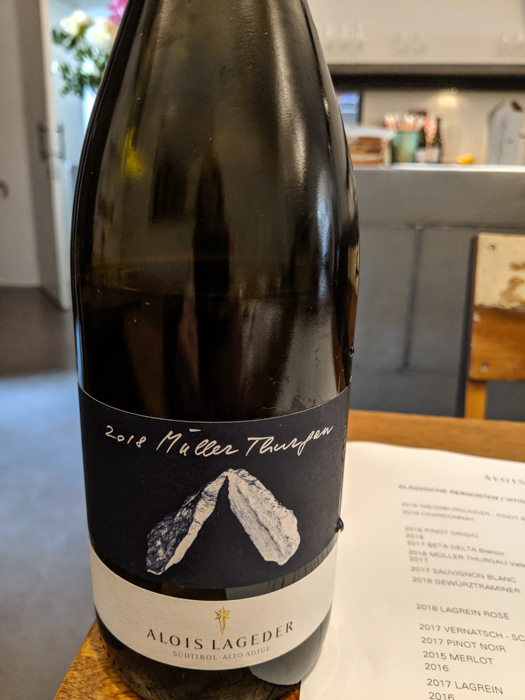
Clear, bright straw-yellow with hints of green. Fruity and floral, slightly aromatic. Crisp, dry, fresh, light, well-balanced acidity. Pair with salads, finger food, seafood. Spontaneous fermentation and aging in stainless, aged on lees for 4 months.
2018 Sauvignon Blanc
This aromatic variety was first planted in Alto Adige at the end of the 19th century, and thrives in the sandy soils of volcanic origin in Terlano near Bolzano. However, it also produces good quality grapes on limestone soils. The interplay of silica and limestone in the terroir determines the style of the wine.
Clear, bright straw-yellow with hints of green. Fresh, fruity, with a nice minerality. Crisp, well-balanced between fruit, floral, herbaceous and mineral flavors. Pair with starters, pasta, risottos, white meats, asparagus. Fermentation and aging in stainless, aged on lees for 4 months.
2017 Vogelmaier Moscato Giallo
In the Vogelmaier vineyard in a small side valley on Lake Caldaro, ventilated by cool downslope winds at night, Moscato Giallo develops its typical aromatics, offering a pleasing contrast between sweet aroma and fresh finish.
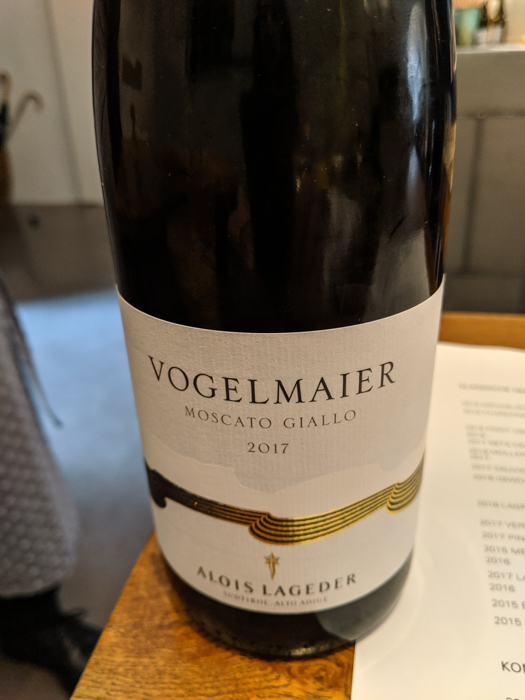
Bright straw-yellow with hints of green. Medium body, intense aromatic nose, strong fruit, fresh. But dry, crisp palate, stone fruits. Pair with meat antipasti, grilled fish, Asian foods. Fermentation, including partly full cluster and aging in stainless, aged on lees for 6 months.
2017 Am Sand Gewurztraminer
This Gewürztraminer is a product of biodynamic vineyards in Termeno, Magrè and Lake Caldaro with sandy soils. Although the sites are very hot, a staggered grape harvest optimizes the effects of each of the 3 locations. This gives the Gewürztraminer freshness, minerality, depth and finesse. When possible, a portion of the grapes is harvested with noble rot.
Darker golden yellow color. Intense aroma, tropical fruits, spice. Full body, savory with stone fruits, fresh, nice acidity, persistent finish. Pair with meat antipasti, grilled or fried fish, Asian food. Some Gewurztraminer can overpower food with intense flavors, but not this one – its understated elegance makes it a great food wine. Spontaneous fermentation, including partly full cluster in stainless, maturation on lees, partly in large casks, partly in stainless for 9 months.
2016 Löwengang Chardonnay
The Löwengang Chardonnay has played a major role in the success of Lageder and in establishing Alto Adige’s status as a quality wine region. In the 1980s it became the first white wine from the region to be successfully positioned at an international level. The Löwengang Chardonnay has been biodynamic certified for 10 years.
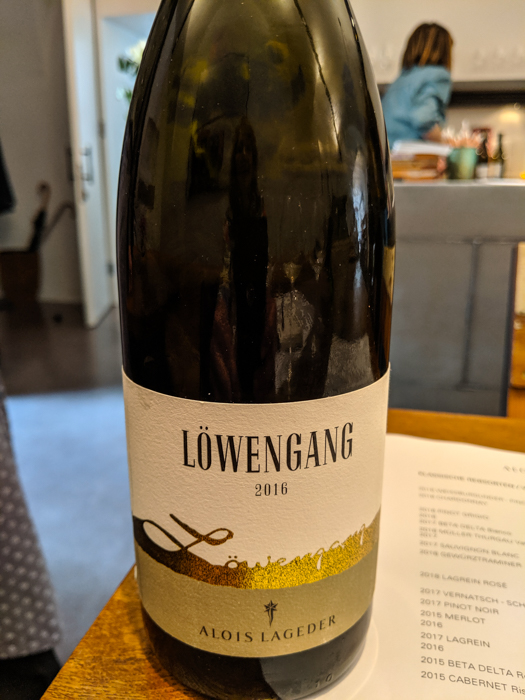
Golden yellow color. Intense aroma, stone fruits, pear, vanilla, butter. Full body, savory, creamy, complex, fresh, mineral. Pair with fish, poultry, white meats, and especially baccala. Spontaneous fermentation followed by 11 months maturation on lees in barriques.
2017 Al Passo del Leone
Al Passo del Leone Rosso was launched in 2009 as Lageder’s first Demeter-certified biodynamic red wine. The grape varieties used in this blend come from vintner partners from all over Alto Adige that have committed to biodynamic vineyard practices. 45% Merlot, 40% Schiava, 20% Petit Verdot, 20% Cabernet Franc.
Cherry red, lots of dark fruit on the nose, cherries and berries. Medium body, fresh, well-balanced, easy to drink. Pair with red meats, cheeses. Spontaneous fermentation and maceration in stainless, malolatic fermentation in large casks for 12 months.
2017 Lagrein
First mentioned in association with Alto Adige in a historical document dated 1370, this native variety is an icon of wine-growing in Alto Adige. Lagrein flourishes on pergola-trained vines in the hot sites in the Bolzano river basin where the soils are high in sand content, gravel and porphyry.
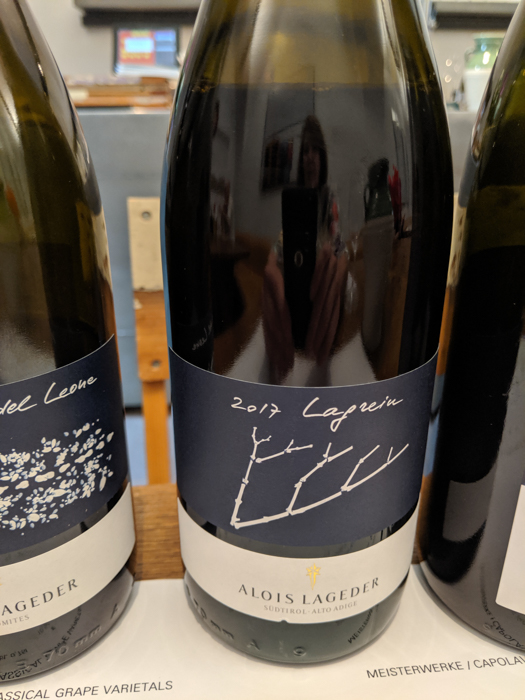
Cherry red with purple shimmer. Berry, spice, earth on the nose. Medium body, fresh, well-balanced, elegant tannins. Pair with red meats, cheeses. Malolatic fermentation in stainless and concrete. Maturation in stainless steel.
2016 Mimuèt Pinot Noir Riserva
The name Mimuèt is from a Ladin expression meaning “to my taste”. From cooler sites near San Michele and Salerno, they focus on optimum timing for the grape harvest so that the grapes are still crisp and lively. That ensures their Pinot Noir has a freshness and liveliness.
Lighter garnet red, fruit, spice, slight wood on the nose. Medium body, fresh, elegant, well-balanced, slight bitter finish. Pair with pork, poultry, duck, mild cheeses. A nice summer red wine. Maturation in a combination of stainless steel, large casks and concrete for 12 months.
2015 Casòn Rosso
In the past, this wine was a blend of Cabernet Sauvignon, Merlot and Lagrein. But in the last few years Lageder has become increasingly excited about the Tannat grape variety, a new sight in the vineyards of Alto Adige. The variety is making good progress from year to year, as it matures well and retains incredibly high levels of acidity. That makes it an interesting grape to consider as global warming affects the local climate, increasing the sugar content of the ripe grapes. As of the 2014 vintage, this variety has been the main component of their red Casòn wine. 80% Tannat, 20% Mouvedre, Syrah, Cabernet Sauvignon.
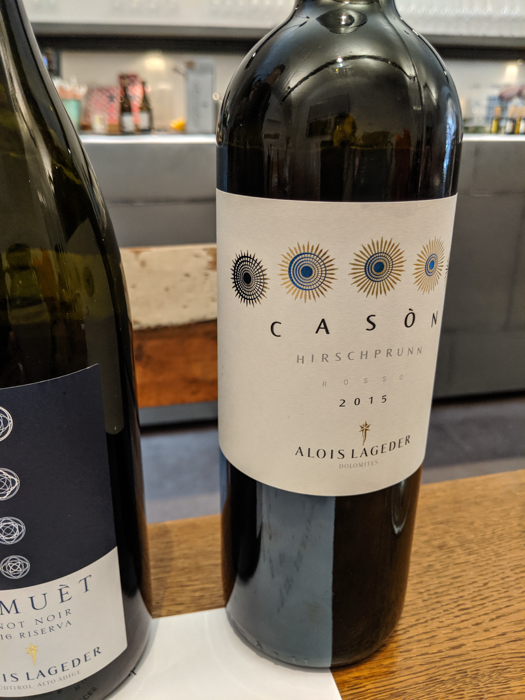
Cherry red,slightly aromatic, fruit, plums, leather, forest. Medium body, fresh, fruit, slightly bitter finish. Pair with red meats, cheeses. Spontaneous fermentation, maturation in barriques and large casks for 18 months.
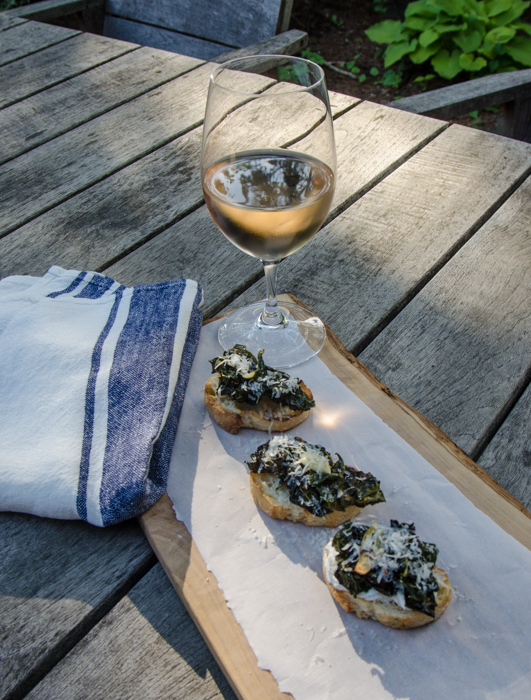
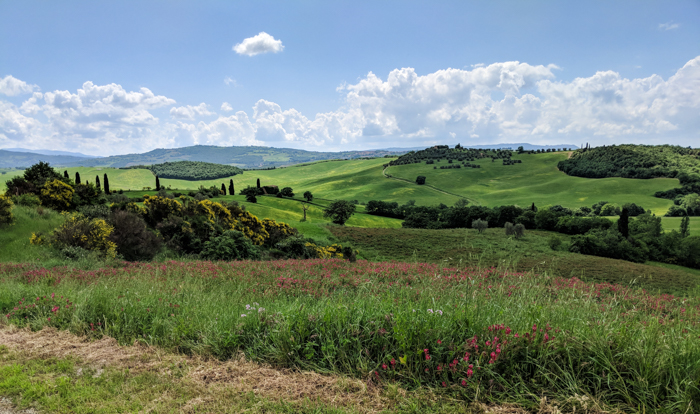
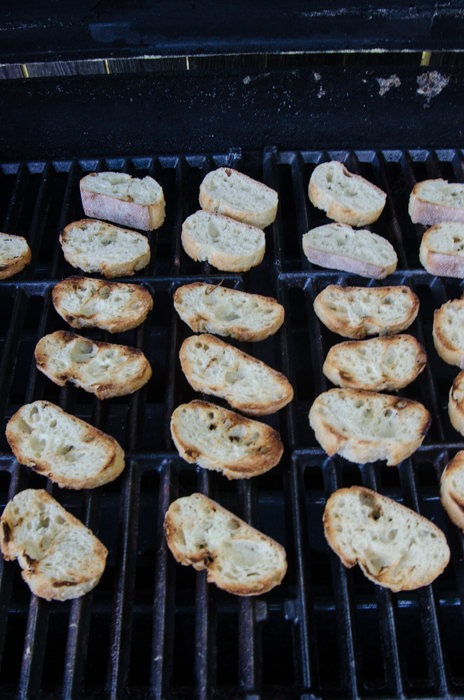
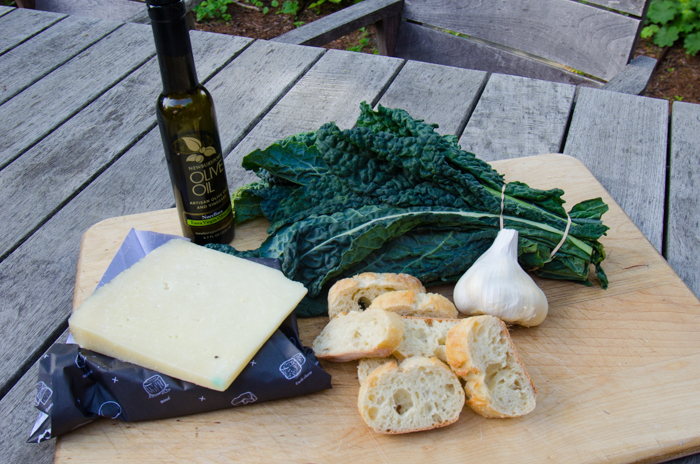
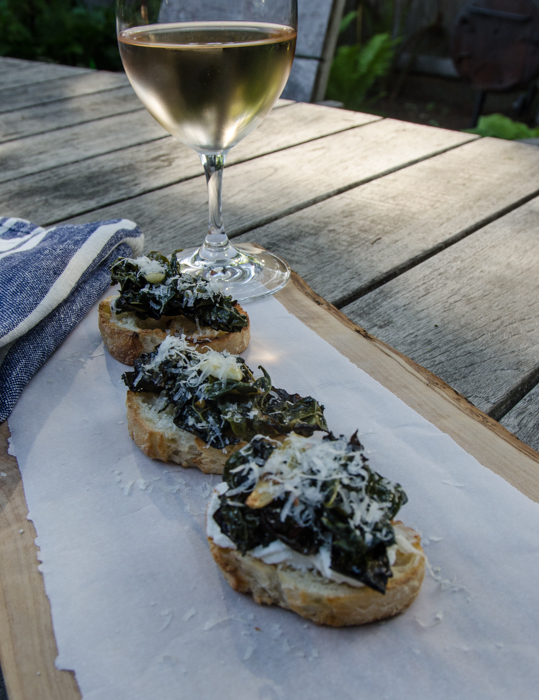





















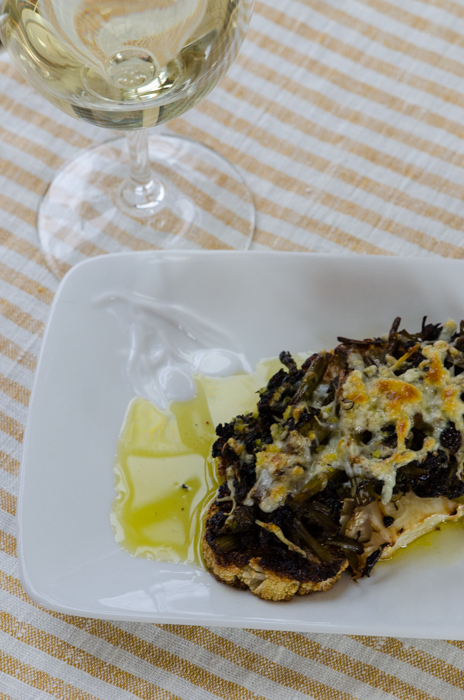 Always on the hunt for new cookbooks to add to my extensive library on Italian cuisine, I was fortunate to have one of the pioneers in the industry visit my Newburyport neighborhood recently. Mary Ann Esposito is one of the most beloved faces in the field, a chef, cookbook writer, and the television host of Ciao Italia with Mary Ann Esposito, which started in 1989 and is the longest-running television cooking program in America. Mary Ann visited
Always on the hunt for new cookbooks to add to my extensive library on Italian cuisine, I was fortunate to have one of the pioneers in the industry visit my Newburyport neighborhood recently. Mary Ann Esposito is one of the most beloved faces in the field, a chef, cookbook writer, and the television host of Ciao Italia with Mary Ann Esposito, which started in 1989 and is the longest-running television cooking program in America. Mary Ann visited 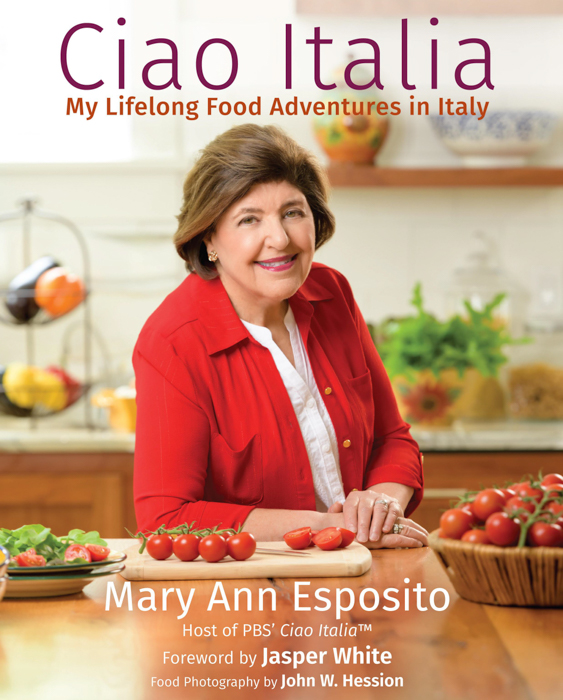
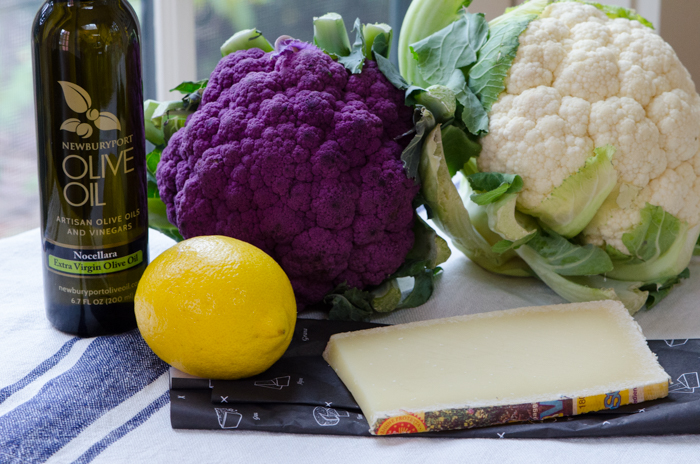
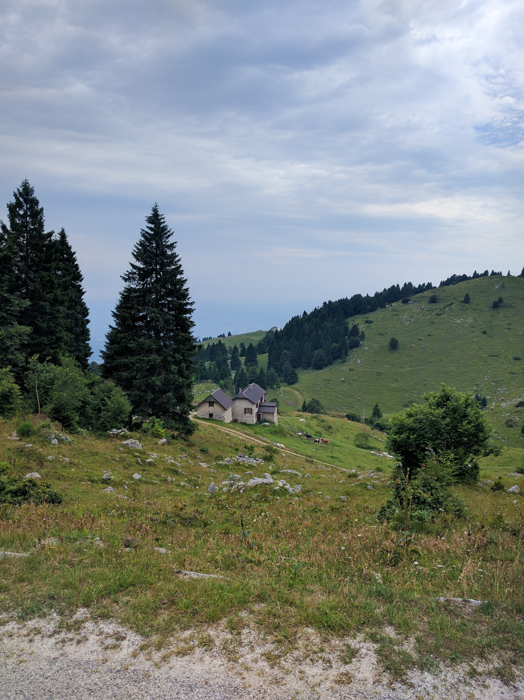
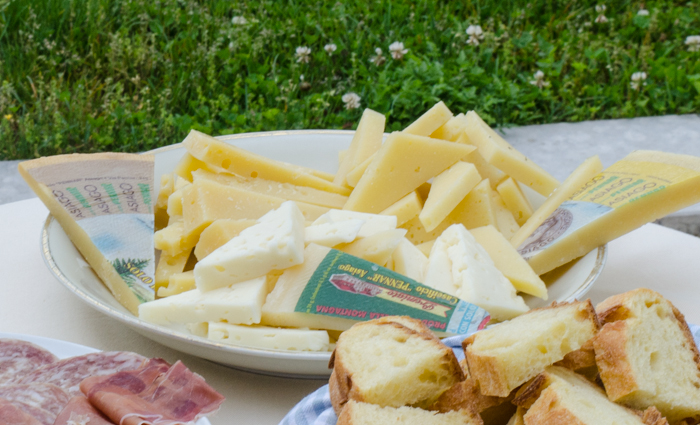 If you can’t find authentic Asiago, I’d recommend using whatever quality hard cheese you can find – a Grana, a Parmigiano-Reggiano, a Pecorino. I used a Piave cheese, produced not too far from the Asiago area.
If you can’t find authentic Asiago, I’d recommend using whatever quality hard cheese you can find – a Grana, a Parmigiano-Reggiano, a Pecorino. I used a Piave cheese, produced not too far from the Asiago area.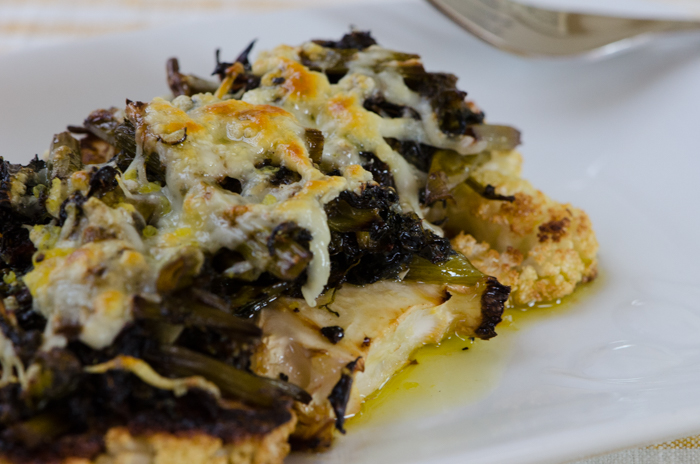
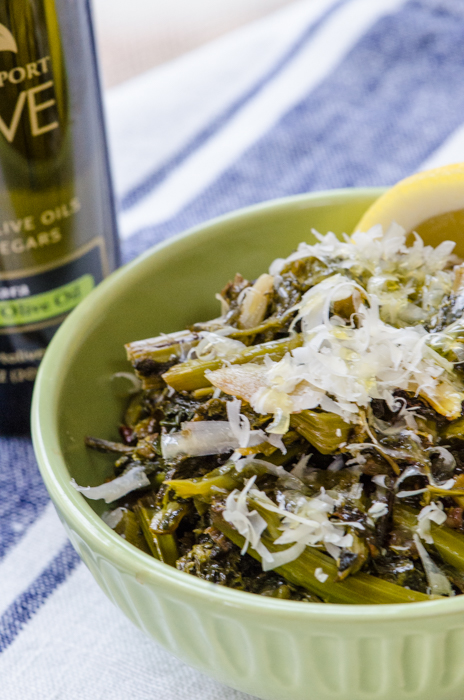
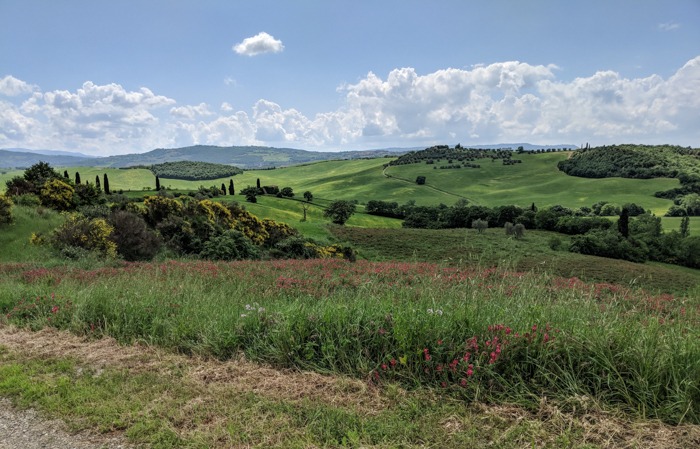
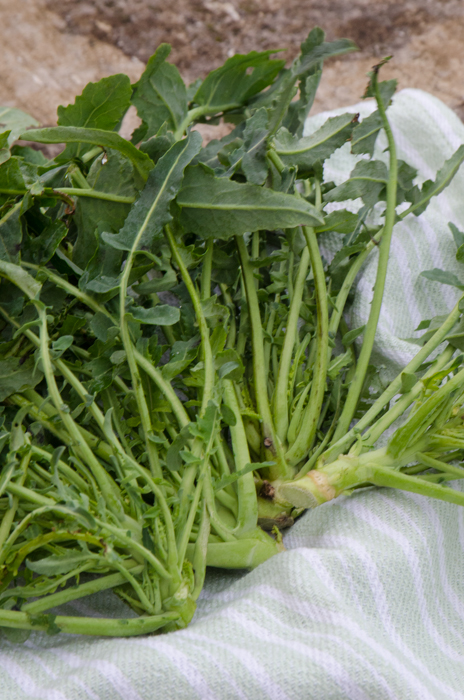
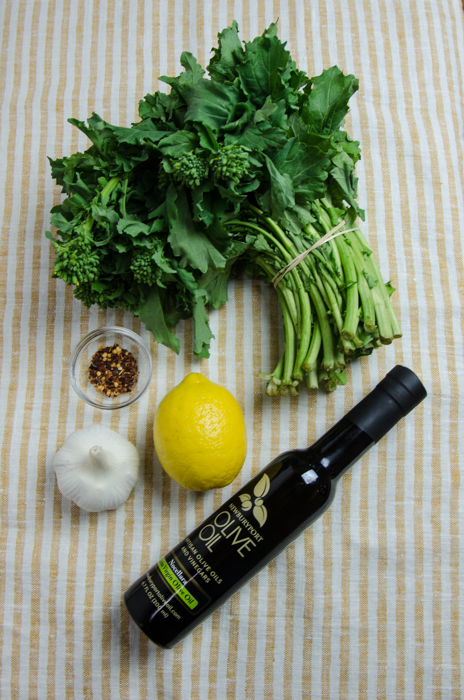
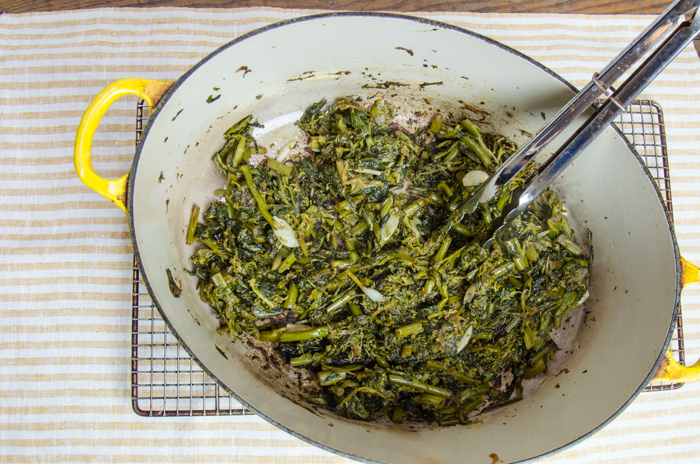
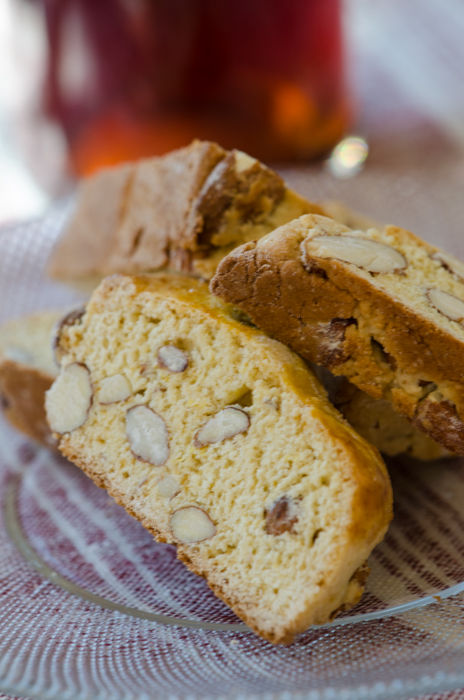 No matter where we travel in Tuscany, be it
No matter where we travel in Tuscany, be it 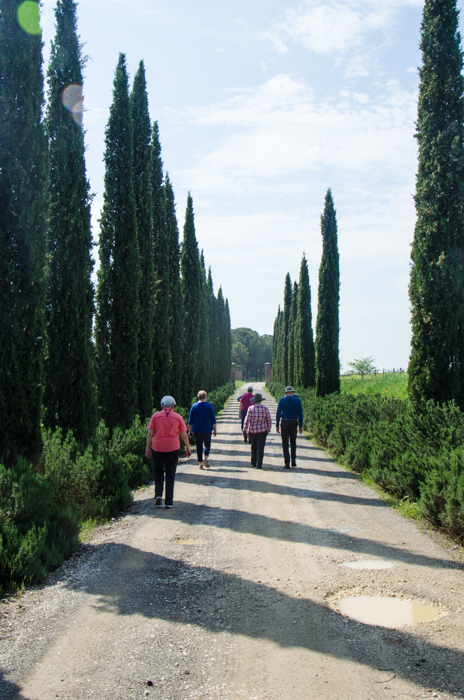
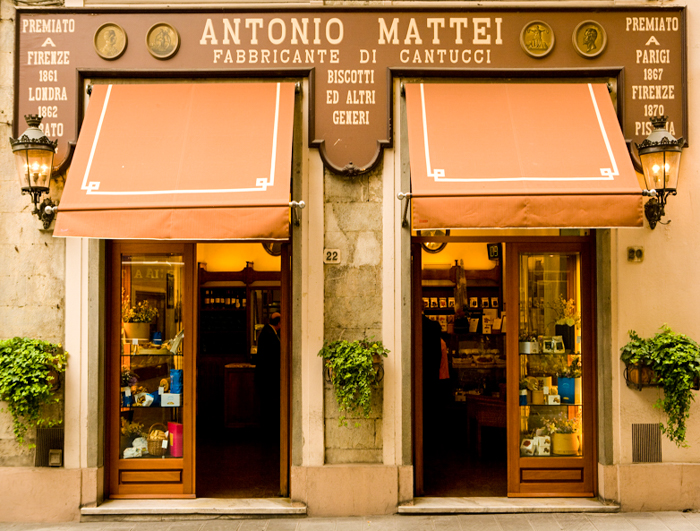
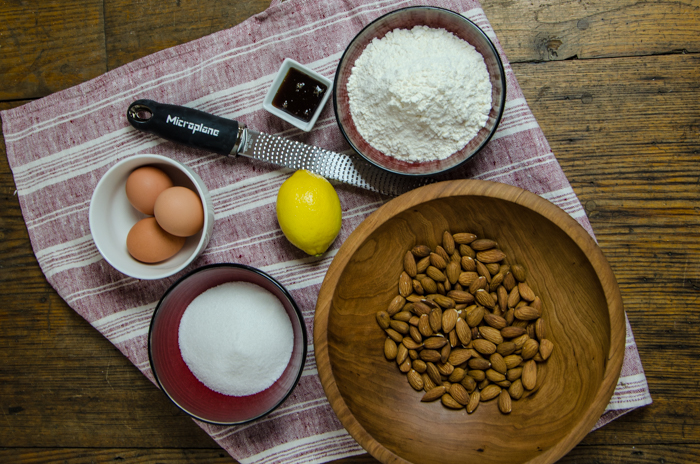 We made cantucci in a cooking class on one of our
We made cantucci in a cooking class on one of our 